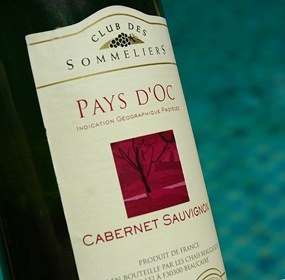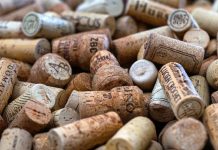The South has always seemed a better place to me, perhaps because I was brought up in a cold and grey northern climate. My attraction to the south may have been partly to do with “the other man’s grass” but even the word “south” always struck me as evocative and full of promise. As a student in London, I used to get a frisson of excitement by the appearance of a clattering underground train with the word “Southbound” displayed on the front, even though I knew it was heading towards some dismal suburb on the other side of the Thames.
Driving south always has struck me as more exciting than driving in any other direction. In the hazy summers of yesteryear, I often used to drive to the South of France along the evocatively named Autoroute du Soleil (“Motorway of the Sun”). Pottering down through France towards the Mediterranean in my ancient Triumph 2000 was always a mixture of euphoria and anticipation. Around 1903, the English composer Sir Edward Elgar wrote a colourful concert overture called “In the South” so perhaps he felt some of that southern magic as well.

These days, some of France’s best wine bargains hail from the south. Gone are the days when French country wines were cheap plonk suitable only for blending or worse still, converting into industrial alcohol. Nowadays you can find some splendid wines from this region, not in the class of top Bordeaux of course, but just as rewarding and a whole lot cheaper.
Here are two super little reds from the Club des Sommeliers. The company appears to be a négociant located in St. Etienne, about thirty miles south-west of Lyon. Just in case you aren’t sure about French wine terminology, a négociant is the French word for a wine merchant who buys in wines from smaller winemakers and sells the final product under his own name. These négociants serve a useful purpose, because smaller winemakers can rarely afford the expensive equipment necessary to produce and bottle their own wines. Négociants normally buy anything from raw grapes to partially-made wines. If they buy the grapes, they usually do both the winemaking and the bottling. When the négociants buy wine in bulk, they sometimes let the wine age a bit, blend in other wines or simply bottle it and sell the wine as it is. The resulting product is nearly always sold under the trade-name of the négociant, not under the name of the original producer.
Both these reds come from the vast Languedoc-Roussillon area, which stretches from the Spanish border half way across the South of France. They’re clearly labelled “Pays d’Oc” (“The Land of the South”) and also carry the IGP designation which places them a notch above ordinary table wines. It means “Indication Géographique Protégée”, since you asked.
Club des Sommeliers Cabernet Sauvignon IGP (red), France (Bt. 399 @ Big C)
This rich, dark red wine has soft and tempting aromas of black fruit and especially black cherries. But wait! Is there just a faint reminder of fresh asparagus or red peppers? These aromas sometimes find their way into Cabernet Sauvignon wines. On the other hand, perhaps my imagination is playing tricks again. It does when you get to A Certain Age, you know. Odd things seem to happen, like strange pulsating lights in the sky, disembodied voices in the garden and assorted prehistoric beasts lumbering through the bedroom at night. I’ve tried taking tablets but they don’t seem to make much difference. (Oh, do get on with it – Ed.)
As yes, the wine. It has a very soft mouth-feel and a good foundation of dry tannin. Although there’s plenty of fruit on the palate, it’s quite dry and medium-bodied. It’s very well-balanced too, which is more than can be said for me after I’ve had a few glasses. You’ll find that the wine has a long dry finish with hints of wood and herbs. It’s an easy-drinker and if you like your reds clean and dry, with an attractive foundation of light tannin, you’ll probably enjoy this very much. It’s quite firm in body and rather reminds me of a light Bordeaux. The wine comes at 13% alcohol content and while it’s lovely to drink on its own, it would go well with light meat dishes or grills. The label suggests that you should serve it between 14°-16°C which in this part of world, means really rather cool.
Club des Sommeliers Merlot IGP (red), France (Bt. 399 @ Big C)
If you prefer your reds a bit rounder and a bit less firm, you may well enjoy this dark red Merlot. Stick your snout in the glass and you’ll probably recognise the typical Merlot aromas of red and black fruit, a sort of forest woodiness and reminders of dried herbs. The wine has quite a soft mouth-feel but also has a delicate cut of acidity which gives it a bit of shape. There’s a good dose of fruit on the palate, but in typical French style, it’s rather restrained, beautifully balanced with a framework of soft and supple tannins.
In some ways, this wine is a bit like those Merlot-based wines from St. Emilion, but it’s more relaxed and laid back. It’s very Southern in fact. I’d be quite happy to spend the evening with this most pleasant wine, in the company of a large dog and a good book. Or perhaps better still, a large book and a good dog. And by the way, if you don’t happen to own a dog, I know a good place near the 7-Eleven where you can rent one for the evening. Very reasonable prices, too.
At 13% alcohol content, this is an attractive easy-drinker that would pair well with light meat or cheese dishes. You could drink it with roast chicken in a brightly flavoured sauce, if the thought of chicken with red wine doesn’t ruffle your feathers.




